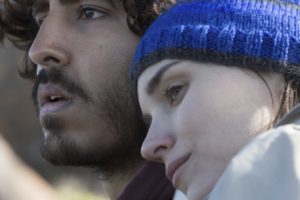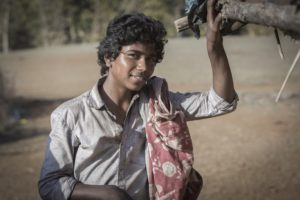
It’s been a good month for cinematographer Greig Fraser: His film, Lion, is winning accolades and snagged four Golden Globe nominations — including one for best picture in the drama category.
At the same time, another film he shot opened in theaters, too. Called Rogue One, it’s set in the universe of an ongoing science fiction saga that many viewers have grown fond of.
He’s even timely with his own version of a “Russian hack.” In this case, it’s his use of Russian-made “Optica-elites,” lenses he takes with him from job-to-job, and which he considers a kind of personal secret (at least until this article), since word about them hasn’t spread, yet.
On the other hand, for Lion, they deployed some Panavision PVintage lenses, lashed to an Alexa camera, though aside from a general filmic quality, Fraser said that neither he nor director Garth Davis were trying to give the film a particular “look,” but they wanted to give each key locale and sequence its own distinct textures and feel.
The true-life story is the journey of Saroo Brierley, who as a child near the small Indian town of Ganesh Tilai, wound up getting lost after falling asleep on a train while out with his big brother, winding up hundreds of miles away in Calcutta (or “Kolkata,”) without remembering enough to get home. He eventually wound up in an orphanage, and then was adopted out to an Australian couple. As a young man, he used Google Earth, and what distant memories he had, to finally retrace his steps — his tracks — back to his hometown, where he was eventually reunited. His autobiography, on which the film is based, became a bestseller.

However, regardless of the different palettes used for Kolkata, and then Australia, Fraser and Davis shared a certain philosophy: “We rarely light if we can avoid it. I think locations can be destroyed by over-lighting.”
Fraser favors the use of LED lights placed in the set, when possible, and prefers to avail himself of all the new in situ color-changing software that LED allows, “with an app,” he smiles, talking about setting color tones from his phone. “No gels!”
But was he able to use this same approach to the other, space-set release he was involved with? “I think it’s the same movie,” he says of the gritty Star Wars prequel. “At it’s core, they have the same soul, the same connection.” And certainly the sense of trying to “get back” to a place where one “belongs.”
“Lion informed Rogue One,” he says, “and vice-versa.” In part, that’s because there was a lot of pre-production testing for Rogue, before he went and shot Lion. After that was wrapped, the tale about the Rebel Alliance went into full production. Each film showed a preference for “subtle colors, not rock n’ roll colors.”
For Lion, he jokes they often had more room to shoot in a train car than Rogue did trying to cram “eight people into a bucket of bolts” with its spaceship and fighter mock-ups. Though for Saroo’s journey they did use dolly and track shots, and used an “Arri on a gimbal,” as they moved through train shots, and with the young boy on foot in the megacity.
And though the film was based on real life events, hey didn’t want to go for a “completely documentary” look, even with the minimal lighting — there was a larger emotional truth they were after.
Still, gimbal sequences aside, they mostly restricted camera movements too, in order to let more of that emotional truth play out in front of the lens. “You know when a camera is grounded,” Fraser says.
The same might be said of a cinematographer’s approach to his increasingly-lauded work.





